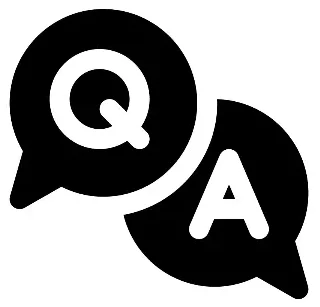introduction to cloud computing coursera week 1 quiz answers
Practice Quiz: Introduction to Cloud Computing
1. Which characteristic of cloud computing enables cost savings by serving multiple consumers?
- Resource pooling
- Broad network access
- On-demand self-service
- Public clod models
2. Which 1950s network feature helped evolve Virtual Machines (VMs)?
- Broad network access
- Measured service
- Shared access to a maintain
- Security, compliance, and performance
3. What are some cloud computing benefits?
- Diversity of standardization
- Purchasing off-the-shelf software and upgrades
- Offline capability and security
- Competitive advantage, flexibility, and efficiency
4. Which of these vendors is known more for their SaaS offerings?
- Salesforce
- Amazon Web Services
- Intel
- Alibaba Cloud
Practice Quiz: Business Case for Cloud Computing
5. How did UBank leverage the cloud to remove barriers to innovation?
- By modernizing their customer-facing apps based on monolithic code into-native based microservices architecture on the cloud
- By establishing a scalable hosting platform for low-latency delivery to enterprise customers around the world
- By migrating their trading systems from on-premises infrastructure to IBM Cloud for VMware solutions
- By adopting a PaaS cloud development model to streamline development and empower product teams
6. Which of the following is a risk that businesses run if they do not adopt cloud?
- Lack of Decision-making capacity
- Data security
- Lack of standardization
- Compliance issues
Practice Quiz: Emerging Technologies Accelerated by Cloud
7. How does Cloud connectivity support loT devices?
- Provide a fixed physical location for the data collected from loT devices
- Increased latency in reporting and response back
- The collection point is near devices in motion
- Draw insights from data collected from the loT devices and users
8. Whatis the three-way symbiotic relationship between loT, Al, and Cloud?
- Al consumes the data produced by loT devices
- IoT delivers the data, Al powers the insights, and both emerging technologies leverage Cloud’s scalability and processing power
- Power, scale, dynamic nature, and economics of the cloud resources
- Making sense of the endless streams of data from loT devices
9. Whatis the three-way relationship between blockchain, Al, and the Cloud?
- Blockchain provides an immutable network allowing members to view only those transactions that are relevant to them.
- Globally distributed, scalable, and cost efficient computing resources.
- Blockchain provides the trusted, decentralized source of truth, Al powers the analytics and decisions made from the collected data, and Cloud provides the globally distributed, scalable, and cost-efficient computing resources to support both technologies.
- Lends trust and transparency to Al by recording the data and variables that go into a decision made in an Al algorithm.
Module 1 Graded Quiz: Overview of Cloud Computing
10. According to the US National Institute of Standards and Technology (NIST) definition of “cloud computing,” what is the meaning of the statement “a shared pool of configurable computing resources”?
- Data security associated with data loss or unavailability causing business disruption.
- Networks, servers, storage, applications, and services.
- Leveraging cloud services over the open internet on hardware owned by the cloud provider.
- Five essential characteristics, three deployment, and three service models.
11. What tasks do hypervisors accomplish?
- Scale on demand to support fluctuating workloads
- Enable multiple operating systems to run alongside each other and separate VMs logically
- Facilitate access to mainframes for multiple users to access the same data storage layer
- Fluctuates workloads and facilitates access to mainframes
12. Which key considerations drive an organization's selection of cloud computing when considering expenditure for off-the-shelf software and investments in upgrades?
- Risk exposure
- Software as a service and development platforms
- Infrastructure and workloads
- speed and productivity
13. Which of the following statements describes a benefit of cloud computing?
- Lack of standardization in how the constantly evolving technologies integrate
- Business continuity
- Hardware failures do not result in data loss because of backups maintained on the network
- Data security associated with loss or unavailability of data
14. Which service provider provides one of the largest cloud-based data management platforms?
- Oracle Cloud
- Amazon Web Services
- Alibaba Cloud
- salesforce
15. Which service provider uses its cloud platform internally for their end-user products, such as Search and app engines that automatically allocate and de-allocate resources to handle demand?
- SAP
- Oracle Cloud
- Microsoft Azure
- Google Cloud Platform (GCP)
16. According to the International Data Corporation (IDC), what is that crucial ability that will make cloud computing essential for businesses to succeed, sustain, and compete in today’s markets?
- Cognitively enabled workflows
- Data-driven decisions
- Multi-cloud infrastructures
- Applied exponential technologies such as Al, Automation, lo, and Blockchain
17. Why did American Airlines require a new technology platform?
- Removal of barriers to innovation
- Requirement for better customer service
- Acceleration of growth
- Establishment of a scalable hosting platform for low-latency delivery
18. Select the answer that best describes how does Cloud Computing helps oT devices?
- stores data on an encrypted physical drive
- Draws insights from data collected from the loT devices and users
- Provides the resources to store and process the data produced by oT devices and users
- Provides a fixed physical location for the data collected from IoT devices
19. Which of the following denotes the relationship between Blockchain, Al, and cloud?
- Blockchain provides an immutable network, Al provides distributed computing resources and cloud powers decision-making
- Blockchain provides a decentralized source of truth, Al powers analytics and decision-making, and the cloud provides globally distributed computing resources
- Blockchain lends trust and transparency to Al by recording the data and variables that go into a decision made in an Al algorithm, and the cloud provides an immutable network
- Blockchain provides the distributed computing resources, Al powers the analytics, and the cloud records the data
